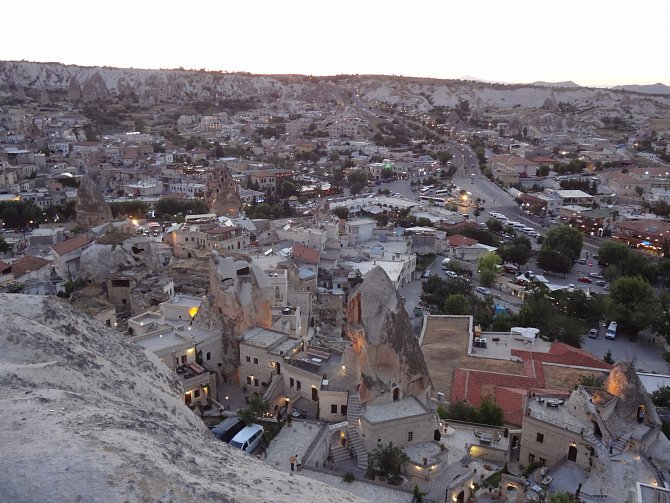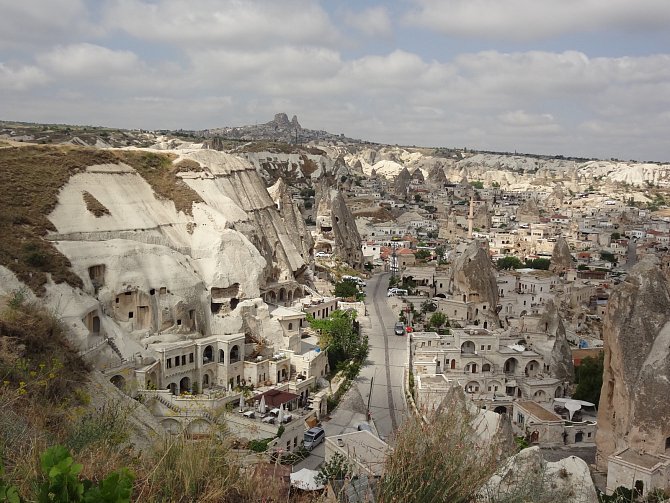A LANDSCAPE OF HUMAN TERMITES. DISCOVER TURKISH CAPODOCIA

Forget the neatly smooth Czech landscape with its hills, streams and churches nestled neatly in the valley. The landscape of Cappadocia in central Turkey feels like a scene from another world. It is as if a giant sculpture symposium has just finished in the arid rocks here.
Sugar domes, chimneys, Gaudi-like waves and at other times absolutely clear phallic shapes. The concept of rock takes on a whole new dimension in Cappadocia. There are plenty of them here and each one is completely different.
Right in the middle of them lies the best starting point for exploring the whole area – the town of Göreme. When you stand at the local bus station and look around, at first you can’t believe your eyes. Not to. Göreme is built right into the rocks. The conical rock chimneys stick out randomly behind the buildings and the houses are stuck to them like swallow’s nests.

The little town of Göreme
It is here that you can best see how the inhabitants coexist with the ubiquitous rocks. They stick to the principle that what doesn’t fit between them gets carved into them. In fact, the conditions here are optimal for mining. The volcanic tuff that makes up the rocks here is very soft rock. You can easily lift a six-foot stone. The rocks have been cut and chiselled in this way since time immemorial. The oldest dwellings are thousands of years old, and not only residential caves, but also chapels, churches, monasteries and entire underground cities have been built in the rocks. Yes, really churches. Here in the middle of Islamic Turkey, during the Byzantine Empire, there was a large Christian community that sought shelter in the rocks from the numerous raids from the east. The current inhabitants no longer have to hide from anyone, but they still dig into the rocks. Now for profit.

Pigeon Valley
From Göreme there are many valleys full of rock jewels. The Pigeon Valley, for example, takes you some four kilometres to the town of Uchisar. Along the way, you’ll keep your eyes on the rock shapes and wonder how people ever managed to carve out dwellings amid the steep rock faces. You will also soon understand why the valley is called Pigeon Valley. In addition to human dwellings, there are also sophisticated pigeon houses carved into the rocks. Birds fly into them through small holes, behind which there is a cave with dozens of niches suitable for building a nest. A pigeon fancier can enter from the side, with his fledglings in the palm of his hand.

Source: National Geographic
Author: Editor | Published: 19.08.2015
